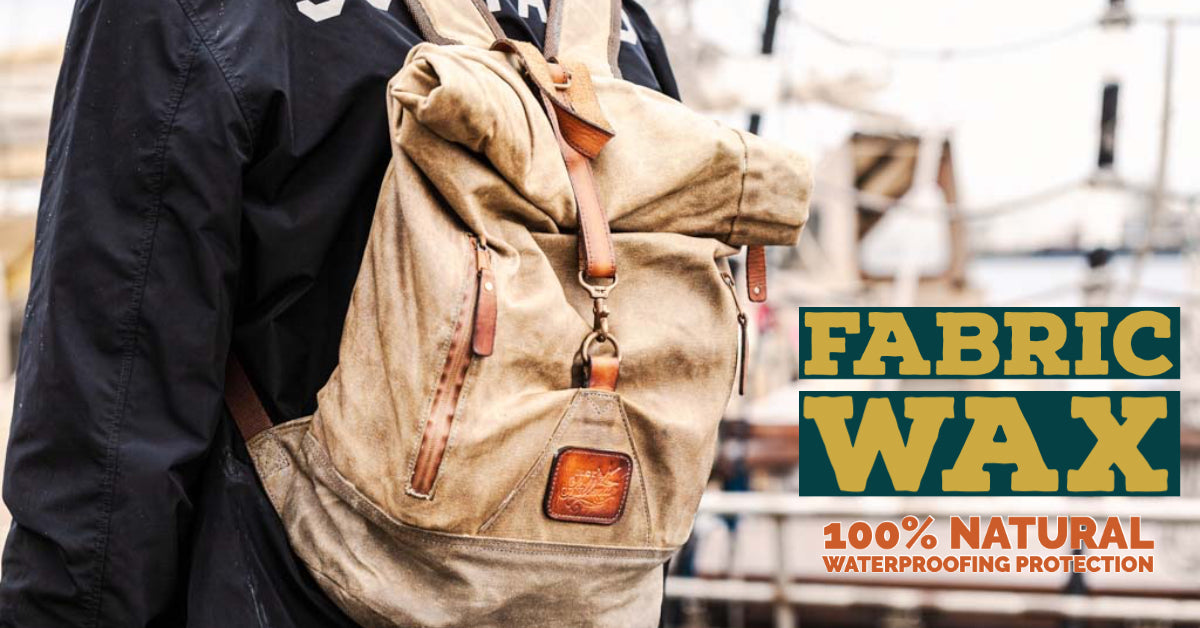Using Fabric Wax Protect and Preserve

Jack Stillman's own brand of fabric was is a beeswax based formula that waterproofs and protects many organic fabrics while allowing them to continue to breath. It also makes your gear look gnarly as f**k.
Granddad Jack’s Sack Wax is our own application that uses 100% natural ingredients to add life and character to bags, clothing and other items. The uses are numerous.
Waxed Fabric has been around for hundreds of years. It had its beginnings in maritime history in the 17th century when sailors added oils and waxes to their sails to make them water resistant and more efficient. Read more on the history of waxed canvas here. During WW2, waxed uniforms and field gear was developed for the British and Australian Military.

Paraffin wax, a petroleum byproduct, was the most popular choice for fabric wax in the past. Jack Stillman has developed a product based on the amazing properties of beeswax and coconut oil. It's so natural, you could eat it (please don't eat it). To learn more about the benefits of fabric wax read this article.

What can you wax?
- Cotton and canvas bags
- Canvas shoes and boots
- Trousers for working outside or hiking
- Jackets and overshirts
- Hats
- Blankets and ponchos
How to use Jack Stilllman's Fabric Wax
NOTE: Applying Fabric Wax could cause the colour of the fabric to darken and it will cause it to become slightly stiffer. Stretch fabrics are virtually impossible to wax and wont perform as well as non-stretch fabrics
What you will need:
- Granddad Jack’s Fabric Wax
- A clean, stable table or flat area
- A hair dryer, heat gun or some warm sunlight
DIRECTIONS FOR USE
- Empty the bag or garment to be waterproofed.
- Dry and brush off to remove loose soil and dust.
- Lay the item flat on a hard surface and rub the Fabric Wax across the fabric fibres. The idea is to get an even covering across the surface.
- Ensure that wax is getting into vulnerable spaces like seams and joins. I don't recommend waxing the inside of the item.

NOTE: Sack Wax works by creating a flexible membrane between the fibres. In basic terms it reduces the gaps between the fabric fibres making it difficult for water to get in. If further obstructs water by causing droplets to bead together into larger globules and run off the item with gravity. The advantage to this over other forms of waterproofing using plastics is that waxed fabric still allows small amounts of air in and out so the fabric can breathe and resist overheating and mould.
- Apply to the whole bag or garment at once, or in sections.
- Rub the wax into the fibres using your hands - especially finger tips - in a rapid motion (causing friction heat) or use a hairdryer or heat gun to melt the wax directly onto the surface. Evenly distribute softened wax across the entire item.

- Apply evenly then allow it to dry off. The item may be slightly tacky for a day or so.
- If you don't want to see any white wax when you are finished wait for the wax to harden after a few minutes and hit these areas again with the heat source. Sometimes you might want to wait 2-3 days and then re-heat and rub down the bag.

- Natural beeswax will evaporate and biodegrade naturally especially in warmer climates. On average, you probably only need to re-wax once a year but you can re-treat as often as needed or desired.








